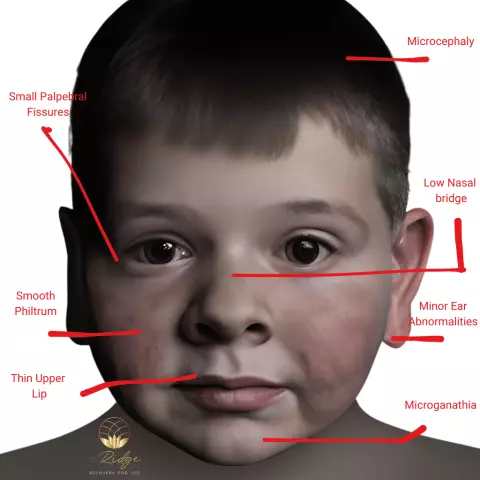- Author Curtis Blomfield [email protected].
- Public 2023-12-16 20:44.
- Last modified 2025-01-23 17:01.
Possible problem
There is enough talk about hypoxia today. This term can be heard by any future mother in the antenatal clinic, the maternity ward, as well as at the appointment with a pediatric neurologist after the birth of a baby. The thing is that hypoxia is a consequence of complications arising during pregnancy or childbirth, which can then adversely affect the further development of the child. Therefore, it is worth thinking about prevention in advance.

What is fetal hypoxia. Symptoms and manifestations
Lack of oxygen supply to the tissues and organs of the baby or incomplete absorption of oxygen is called hypoxia. The consequences of oxygen starvation in different periods of pregnancy may differ. In the early stages, during the formation of organs and systems, pronounced oxygen starvation can lead to a slowdown in the growth of the embryo and the appearance of developmental anomalies. Fetal hypoxia - its symptoms at a later date are more dangerous - can lead tothe fact that the fetus will develop more slowly, the central nervous system of the fetus and the newborn will be affected, and the processes of adaptation of the child in the postpartum period will be disrupted. In rare situations, it can lead to stillbirth or death after delivery.

Fetal hypoxia - symptoms and types.
Depending on how long oxygen starvation lasts, chronic and acute fetal hypoxia is distinguished. Chronic develops when the fetus is not sufficiently supplied with oxygen for a long time due to organ diseases in the expectant mother, complications during pregnancy. It can also be caused by smoking, drinking alcohol, drugs. Fetal hypoxia during childbirth can also appear and it proceeds in an acute form. Very rarely, acute oxygen starvation occurs during pregnancy in a life-threatening condition for the mother (premature exfoliation of the placenta, ruptured uterus). Sometimes both types of hypoxia can be combined together.
Fetal hypoxia - symptoms and effects on the fetus

Not each of the pregnancies that occurs with the above diseases has a complication in the form of intrauterine oxygen starvation. The thing is that there are physiological features in fetal development that create obstacles for the occurrence of this condition:
- Fetal blood can hold more oxygen molecules than adult blood;
- the heart passes significantly more blood;
- the blood contains a special fetal hemoglobin in large quantities, with the help of which oxygen is easily added and given to tissues and cells, which is very important due to the high speed of blood flow.
How to trace?
Hypoxia has different symptoms, but under the influence of a lack of oxygen, the function of the adrenal glands is activated. For this reason, the production of substances involved in the heart rate and increase in fetal blood pressure increases. As a result, blood flow is redistributed, that is, blood circulation in the brain, heart and other organs becomes stronger. This is due to the fact that it is necessary to maintain the volume of blood supply and the functions of organs, which are very important in the intrauterine life of the child.






